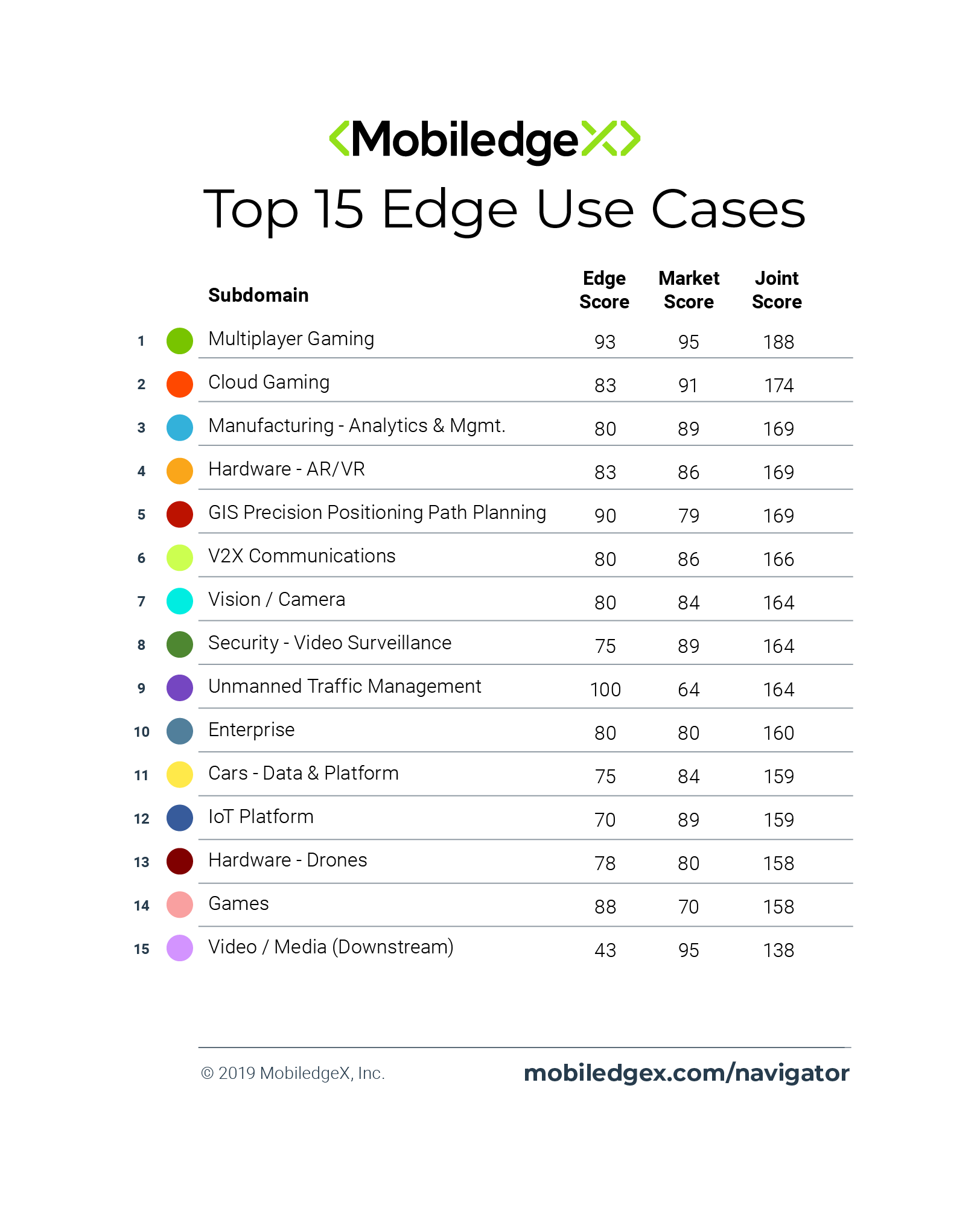MobiledgeX was founded three years ago by Deutsche Telekom to make edge computing widely available and easier to access.
The initiative is part of DT’s vision regarding the importance of collaboration in the era of 5G.
For the past three years DT and MobiledgeX have conducted interviews with more than 200 enterprises about edge computing.
The researchers wanted to understand what innovations the enterprises were planning around the use of edge computing and the network requirements to fulfil them.
The interviews revealed that multi-player and cloud gaming, V2X communications, and Industrial IoT are among the most viable, near-term use cases for edge computing, based on nine critical market and edge-related factors.
Critical factors
They are: market opportunity, venture capital activity, maturity/time-to-market, and network coverage needed.
The edge factors are criticality of latency, volume of data exchange, geospatial knowledge requirements, hyper-local grouping demands and data residency requirements.
The top 15 edge use cases identified (see below) from the research include geographical information systems (GIS) and positioning, video surveillance, unstaffed traffic management, and vision and camera-related applications.
Sharing to support collaboration
MobiledgeX is making that data and top-level findings available via an interactive tool called Edge Navigator.
It has opened the tool to the wider community so other can contribute their experience and insights to help the industry identify and accelerate the development of edge business models and deployments.
Also, from its own work and the contribution of others, it intends to create “a living model” that the company will report on regularly.
Further, MobiledgeX is starting an early-access developer programme, giving developers access the MobiledgeX’s code, resources and services so they can begin experimenting in live edge networks.
Edge Navigator Use Case Model
Eric Braun, CCO of MobiledgeX, said, “We intend for this collaborative endeavour to help the global edge ecosystem contribute to a public knowledge base where resulting data and insights can be debated, enhanced with other market findings, and most importantly, acted upon for a smoother path to edge success.”
Initial insights from contributions to Edge Navigator by users will be available and shared within Edge Navigator later this summer.
Analyst Chetan Sharma has studied the research and his report on it, Edge Computing Framework: Understanding the Opportunity Roadmap, is available from here




